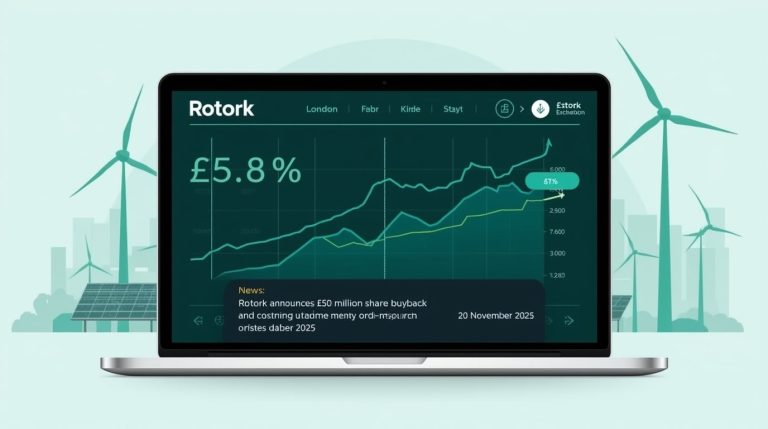With the cryptocurrency market disoriented by a 1.5 trillion wipeout, the USDC is now the ray of hope, skyrocketing to a new high of 76 billion in circulation on November 21, 2025. The dollar-pegged stablecoin of the Circle Internet Group has not only held its perfect 1:1 peg to the U.S. dollar, but it has also experienced a 78% annual growth, outperforming its competitors as Bitcoin dropped below 86,000 and Ethereum to 2,800.
Having already transacted more than 20 trillion in its lifetime volume, and a concerning 1 trillion in November alone, USDC is making itself the digital dollar of choice as traders are being forced to escape volatility.
On-chain data show that transfers of USDC increased 15% over the past 24 hours, with investors transferring funds into this compliant haven, and this demonstrates that it is resilient in an industry that has been shaken by tariff concerns and Fed policy concerns.
This achievement comes amidst a wider market carnage where solvency was reached at over 800 million yesterday. However, the growth of USDC reveals that a flight to quality institutional demand has increased 90% in Q2 2025 alone, and Circle reported 658 million in revenue on reserves.
The transparency of the stablecoin that is supported by monthly Deloitte audits and full support in the cash equivalents with the Circle Reserve Fund has earned it the trust of more than 500 million wallet users across the globe. It is not only that in crypto winters, USDC is not simply enduring; it is expanding, according to one analyst, panicking into programmable prosperity.
Circle Mints $1.25 Billion USD on Solana: Increasing Liquidity During DeFi Squeeze
The fast minting of Circle is not over as of today, with a new batch of $250 million USDC minted at USDC Treasury, after it injected 1.25 billion into Solana earlier this month.
This increases the overall supply of Solana to more than 8.74 billion USDC, and it controls 63% of all stablecoins in the network and makes the high-speed blockchain a force in DeFi. It was bought in 3 tranches of 750 million, 250 million and again in 250 million, indicating an explosion of demand for low-cost and efficient liquidity in high context of increasing gas costs on Ethereum.
The strength of Solana is the fact that the finality takes less than a second and has fees that are insignificant, and thus it is ideal for trading large volumes and yield farming. USDC TVL has increased 22% in the past week, including chain-based DeFi protocols, such as Jupiter DEX and Kamino lending, despite the decline in overall crypto volumes.
The strategy of Circle is in line with its multi-chain vision that extends to 28 networks such as Ethereum, Polygon, and Stellar. This cross-chain capability has made possible the transfer of assets with ease through the Cross-Chain Transfer Protocol (CCTP V2), which removes bridging risks that have plagued wrapped assets. These mints are taking in sidelined capital and, as the crypto bloodbath continues, may bring back a resurgence of altcoin liquidity after sentiment normalises.
Visa and Wirex Roll Out USDC Settlements: Revolutionising Global Payments for Millions
Visa, in its first step towards real-world adoption, has launched pilot payouts in USDC through its Direct service, to gig workers and influencers in 195 countries, as well as enabled first-time settlements in two stablecoins, USDC and EURC, on Stellar on behalf of over 7 million users.
The integration, which is currently live and announced only a few days ago, means that Wirex can settle card transactions in real time and without any bank intermediaries, which reduces the cost of cross-border transactions by up to 80%.
The USDC product of Visa Direct, which was piloted with Circle, would offer real-time disbursements of unbanked creators, turning stablecoins into local fiat at point-of-sale. It was announced that stablecoin-native settlement is alive at scale by the co-founder of Wirex, Pavel Matveev, and the co-founder of Visa, Cuy Sheffield, who made it known as a programmable payment step.
AC flows on the efficient rails of On Stellar have the potential to facilitate transactions on remittances valued at 30 billion a year, industry estimates, with the MiCA-compliant nature of USDC providing passportability to the EU.
With regulatory winds such as the GENIUS Act, making the compliance model of Circle a regulatory one, these integrations put the USDC at the core of tokenised finance as Web3 connects to the traditional rails.
High-Yield DeFi and Institutional Flows: 500% APYs and OTC Preeminence Powered by USDC
The utility of the USDC is most useful in the world of DeFi, where services such as the Earn program proposed by the LBank are paying up to 500% APY on short-term bets, attracting a fresh inflow of deposits up to $2.5 billion in new loans this month despite the crash.
These yields, which are made by liquidity mining and arbitrage, are very different to the old methods of saving, and yield-hungry institutions are getting attracted. Finery Markets documents that stablecoins took 75% of institutional OTC volume in H1 2025, as the turnover of USDC has gone 29-fold year-over-year, due to the MiCA regulations in Europe, which have pushed less-regulated peers to the margins.
Whales are also accumulating: on-chain data reveals that there exists $602M of stablecoin borrows against USDC security in Aave, to facilitate leveraged positions without having to sell core holdings. Circle, which launched Circle Payments Network (CPN) in May, has four operating corridors and 100+ partners, through which enterprise treasury operations run.
Further interoperability is promoted by the fact that Native USDC has been launched on such chains as World Chain and Cosmos hub, which is run by Noble, transforming bridged assets into fully backed tokens for 27 million users. As a DeFi strategist, it turned out, USDC is not volatile; it is volatility that drives the next stage of crypto.
Regulatory Wins and Future Horizons: Bank Charter Bid Signals Mainstream Leap
Circle has an unparalleled regulatory momentum. In June, it sought a charter as a national trust bank to open the First National Digital Currency Bank to allow direct custody of tokenised securities and strengthen the infrastructure of USDC.
The adoption of the GENIUS Act meant the adoption of stablecoin standards that affirmed that USDC was not a security according to the SEC in its April statement. Globally, the EMI license of MiCA under the platform of Circle has been used to issue the product seamlessly to the 450 million consumers in the EU, and the EURC is currently the leading euro stablecoin.
In the future, the 2025 State of the USDC Economy report predicts the new circulation of $100 billion before mid-2026 due to tokenised RWAs and payments. Partnering with Mastercard, Stripe, and Nubank is broadening the applications of settling merchants to micro-lending in low-income countries.
However, there are threats which will put resilience to the test: quantum threats to cryptography and the risk posed by CBDCs are going to be tested. The new One World Trade Centre headquarters of Circle, which is set to open in early 2026, represents its rise.
Prospectus: USDC as Crypto in Rocky Seas
The USDC looks optimistic: analysts predict a high of $90 billion in circulation at the end of December, with transaction amounts rising two-fold to $2 trillion monthly should ETF rebounds ignite inflows.
Bearish, which is associated with long-term macro squeeze, temporarily falls to below 70 billion; however, its 100% reserve support contains the depegging anxieties. With Bitcoin and Ethereum haemorrhaging, the rise of USDC up 6.4% since August is evidence that crypto is getting its unsung heroes.
USDC is currently standing on November 21 at a stable cost of $1.00, a digital dollar. It is not just a home but more of a launchpad to the on-chain economy for investors. USDC is not only surviving in these turbulent times, but it is sailing the ship to a tokenised tomorrow.












 Bitcoin
Bitcoin  Ethereum
Ethereum  Tether
Tether  XRP
XRP  USDC
USDC  TRON
TRON  Lido Staked Ether
Lido Staked Ether  Cardano
Cardano  Avalanche
Avalanche  Toncoin
Toncoin  Solana
Solana